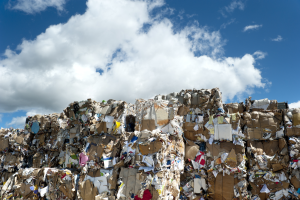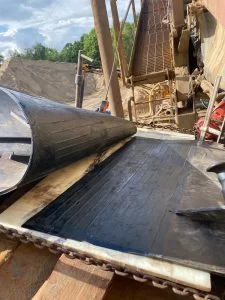A team of researchers at Oxford University have developed a scientific process that can take carbon dioxide currently in the atmosphere and convert it into jet fuel.
9, a:1:{i:0;s:8:”defaults”;}, conveyor belt equipment, Oxford Team Looking To Convert Carbon Dioxide Into Jet Fuel, A team of researchers at Oxford University have developed a scientific process that can take carbon dioxide currently in the atmosphere and convert it into jet fuel., A team of researchers at Oxford University have developed a scientific process that can take carbon dioxide currently in the atmosphere and convert it into jet fuel.
The study, published in the journal Nature Communications highlights a method to convert what is a common byproduct of not only jet engines but other internal combustion engines into a jet fuel that is inherently carbon neutral.
The generation process uses hydrogen and energy to generate which both can be attained through renewable sources to absorb carbon dioxide and use a process known as ‘organic combustion’ to turn it back into a liquid that can be used with existing jet engines.
This process, along with powering conveyor belt equipment and other ancillary parts of the aviation industry using carbon-neutral resources and renewable energy, could help to mitigate or even reverse the environmental damage caused by the aviation industry.
Global aviation contributes to 2.5 per cent of carbon dioxide emissions. This is primarily due to the use of fossil fuels which when burned convert hydrocarbons into carbon dioxide which is expelled into the atmosphere.
Once this and other greenhouse gases such as methane are in the atmosphere they trap heat inside, which leads to increased global temperatures, a reduction in snow and ice that reflects sunlight into the atmosphere and the resulting change in weather patterns.
To combat this, radical changes have been seen in several industries that have historically contributed to climate change, such as logistics, sea freight and aviation.
Jet fuel is a particular cause of climate change because of the refining process used to make it, and the need for it to avoid freezing at the lower temperatures seen higher in the atmosphere.
One solution is to move to biofuel, as has also been seen in the maritime industry, however with more profound solutions required, using carbon already in the atmosphere would lead to no extra carbon being added to the air.
The fuel creation process uses a catalyst made from iron oxide, manganese and potassium, before adding citric acid, carbon dioxide and heating this mixture to 300°C to create a liquid that is believed to act like jet fuel at scale.
Whilst the aim of the Oxford team is for a transatlantic flight to be completed using this new carbon conversion method, capturing carbon dioxide from the air is more difficult than from a canister as it is diluted to the point that only 0.04 per cent of the air is carbon dioxide.
This could make the process more complicated and more expensive to operate at scale than the success of the lab experiment would suggest.
However, the benefits of success here would be significant. The organic combustion method is, according to Oxford’s researchers, cheaper, faster and less reliant on cobalt than other methods to convert biofuels into jet fuel.
If an effective system is found to convert carbon directly from the air or combine this discovery with energy-efficient carbon capture technologies, then there is the potential to quickly transform the aviation industry., field_544dcaa8220f0, , field_543e9601d7f94, 29




